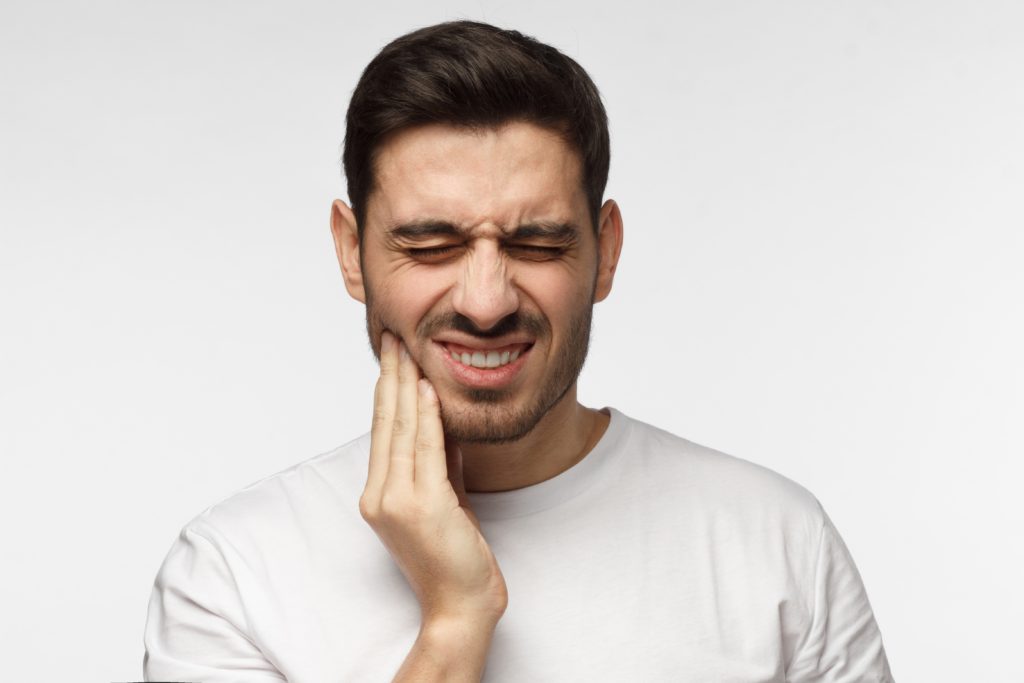TMJ
DISORDER

Symptoms of TMJ disorder are one of the most common concerns in any dental practice. The TMJ, temporomandibular joint, is the joint where the lower jaw meets the side of the skull near the ear area. TMJ disorder includes a variety of symptoms such as pain and tenderness in joint. The joint may “click” and “pop” which becomes a concern when these sensations become painful. TMJ disorder is almost always accompanied by muscle tightness and some patients report difficulty opening their mouth fully. Oftentimes, patients experiencing the disorder also report headaches in the temple region on the side of their head. These symptoms can be present on both sides or on only one side. Usually, they come and go with flare-ups becoming increasingly frequent if the condition is not managed.
Several things can set off the symptoms of TMJ disorder. The condition and flare-ups are almost always related to stress. Some patients have even reported a resolution of symptoms after making changes in their life to better control and manage stress levels. Sometimes the symptoms first appear after some kind of trauma to the area such as a car accident or a sports injury. Patients with a history of TMJ disorder should also be wary of scheduling especially long dental appointments since holding the mouth open for extended periods of time can also cause an increase in symptoms.
Most people with TMJ disorder will clench and grind their teeth, especially at night or during moments of stress throughout the day. The TMJ joint is only meant to be under a clenching type force during normal chewing. Adding additional hours of grinding overnight clearly puts more overall force on the TMJ. Eventually this can lead to swelling within the joint and muscle spasms leading to the symptoms described above. Clenching and grinding can also cause damage to the teeth over time as the enamel wears down. Most patients with TMJ are successfully treated with a combination of medication and the regular use of a custom night guard. The night guard is simple to make and just requires some molds of the teeth to be taken and sent to the lab. The patient then returns about two weeks later to have the appliance adjusted and delivered. The purpose of the night guard is to keep the joint in a neutral position throughout the night to avoid the overloading force of nighttime teeth grinding. It also protects the teeth from further damage and wear. By wearing the night guard at night, the patient will also have an easier time avoiding clenching during the day since the ideal and neutral position will start to feel more normal.
Many patients ask about getting a night guard over the counter. This is not recommended, however, since the over-the counter varieties are often too soft or too thick. If the material is too soft, it ends up being chewy and actually encourages more grinding. If the appliance is too thick, this will also add extra strain to the joint and can cause more harm than good.
The medications recommended for TMJ disorder include both an NSAID and a muscle relaxer. For those patients who can take ibuprofen, doses of 600mg every 6 hours are recommended for at least a week if a bothersome flare-up occurs. This dose is high enough to actually address the swelling in the joint while also relieving the discomfort. A prescription muscle relaxer is often recommended as well to relieve any accompanying muscle spasms. Other things that can help include applying a hot compress to the area over the joint and gently massaging the tight muscles while taking a hot shower. For those patients who are not adequately managed with a night guard and medication, several specialists in the area can treat complex cases.
During your exam, our team here at Tidewater Dental Arts will ask you about any history of these symptoms and check the joint for tenderness and signs of dysfunction as you open and close your jaw. Together we can find a solution to all of your dental needs.

